Solar Term
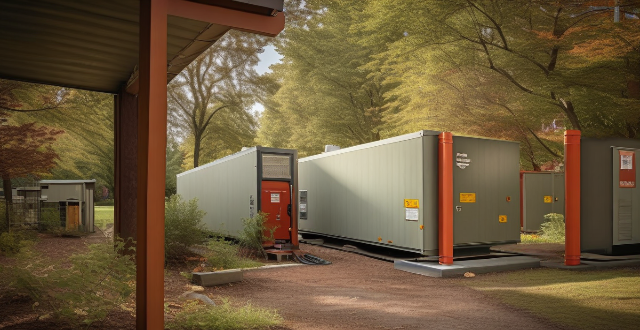
How do solar panels impact electricity bills in the long run ?
Solar panels can significantly reduce electricity bills over the long term by reducing energy consumption, increasing self-sufficiency, and taking advantage of net metering programs. While the initial cost of installation can be high, lower operating costs, federal tax credits, and increased home value can help offset these expenses. Additionally, solar panels offer environmental benefits such as reduced carbon emissions and support for renewable energy infrastructure.
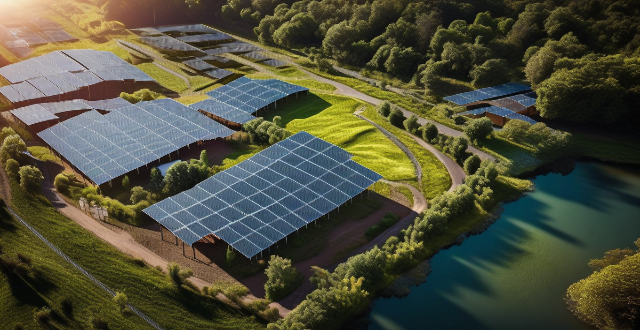
How does solar energy work ?
Solar energy is generated through the use of solar panels containing photovoltaic cells, which convert sunlight into electricity via the photovoltaic effect. This process involves absorbing sunlight, exciting electrons to a higher energy level, generating an electrical current, collecting it, and converting it into usable AC electricity. Solar energy is renewable, sustainable, cost-effective, and environmentally friendly, but its effectiveness can be reduced by weather conditions, and it requires additional equipment for energy storage. Despite high upfront costs, solar energy systems can lead to long-term savings on utility bills.

Is it possible to run my entire house on solar power alone ?
The possibility of powering an entire household with solar energy alone is influenced by various factors, including energy consumption habits, geographic location, available roof space, and system efficiency. Financial considerations, net metering policies, and maintenance requirements also play a role in determining the feasibility of such a setup. Homeowners should assess these elements and consider professional consultation to ascertain if their home can run solely on solar power.

How does solar power work and is it a viable option for homes ?
Solar power is generated through solar panels made of silicon cells that convert sunlight into direct current (DC) electricity. This process involves absorption of light, conversion to DC, conversion to alternating current (AC), and distribution throughout a home or business. Solar power is a viable option for homes due to its renewable nature, cost savings, environmental benefits, and government incentives. However, weather conditions, storage options, and upfront costs should also be considered before deciding if solar power is the right choice for your home.
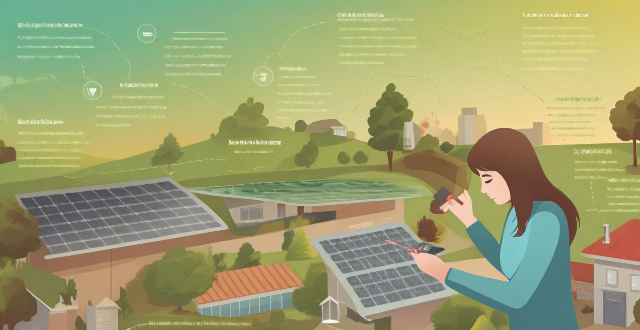
How can I maintain and clean my solar panels for optimal performance ?
The article discusses the importance of maintaining and cleaning solar panels to ensure their optimal performance. It provides a detailed guide on how to keep solar panels in top condition through regular inspection, cleaning, preventative measures, and safety precautions. The guide includes steps for visual inspection, checking for shading, monitoring production levels, dry and wet cleaning methods, using bird repellents and gutter guards, and routine maintenance. It also emphasizes the importance of wearing appropriate safety gear and taking precautions when working on or around solar panels. By following these steps, homeowners can extend the lifespan of their solar panels and maintain their efficiency over time.

What are the advantages of using solar panels for residential and commercial purposes ?
Solar panels offer reduced energy costs, environmental benefits, increased property value, energy independence, low maintenance, and government incentives for residential and commercial use.

Are there any government incentives for installing solar panels ?
Governments worldwide offer various incentives to encourage the adoption of solar energy, including tax credits and deductions, rebates, net metering, feed-in tariffs, grants, low-interest loans, green energy certificates, and solar rights laws. These incentives aim to reduce the upfront costs of installing solar panels and make renewable energy more accessible and financially viable for homeowners and businesses. However, eligibility requirements and application processes can vary, so it's essential to consult local professionals or agencies for specific information.
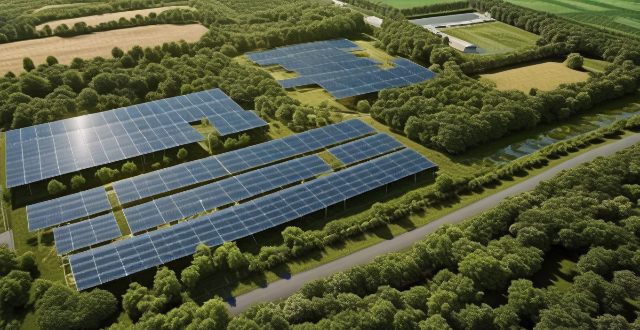
How does solar power generation work and is it a viable option for residential use ?
Solar power generation involves converting sunlight into electricity using solar panels, which are made up of photovoltaic cells. The process includes generating electricity, converting it from DC to AC, net metering, and battery storage. Solar power is a viable option for residential use due to its cost-effectiveness, energy independence, environmental benefits, increased property value, and technological advancements.
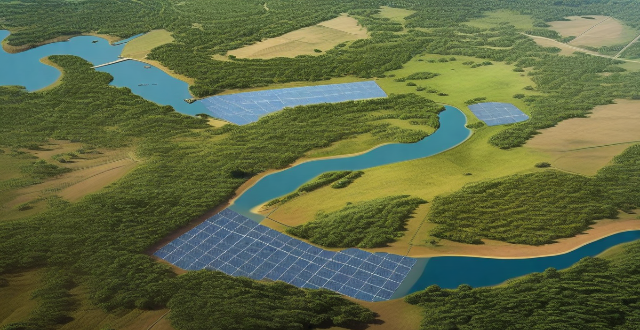
How long do solar panels typically last ?
Solar panels are a sustainable and cost-effective way to generate electricity. However, the lifespan of solar panels is an important factor to consider when making an investment in renewable energy. In this article, we will explore how long solar panels typically last and what factors can affect their lifespan. Solar panels are designed to last for several decades, with most manufacturers offering warranties of 25 years or more. However, the actual lifespan of a solar panel can vary depending on several factors, including the quality of materials used, the installation process, and environmental factors. The quality of the materials used in the manufacturing process can significantly impact the lifespan of a solar panel. Proper installation ensures that the panel is securely mounted and protected from potential damage caused by weather conditions or other external factors. Environmental factors such as temperature, humidity, and exposure to sunlight can also impact the lifespan of a solar panel. To ensure that your solar panels last as long as possible, it is essential to perform regular maintenance checks. This includes keeping the panels clean, checking for damage, and monitoring performance over time. By following proper maintenance practices and monitoring your solar panel's performance over time, you can ensure that your investment in renewable energy pays off in the long run.

What are the benefits of using solar power ?
Solar power is a renewable and sustainable energy source that offers numerous benefits. It can be cost-effective in the long run, environmentally friendly, promotes energy independence, has low maintenance costs, versatile applications, creates jobs, provides government incentives, increases property value, and enhances energy security. As technology advances and awareness grows about renewable energy sources like solar power, its adoption is expected to continue rising worldwide.
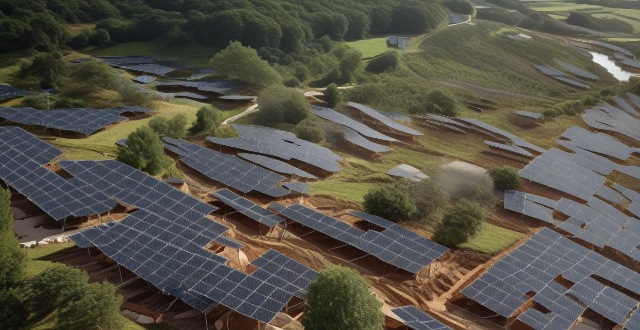
How does wind energy compare to solar energy ?
Wind energy and solar energy are both renewable sources of energy that have gained popularity in recent years. Wind turbines can generate electricity with high efficiency and low maintenance cost, while solar panels have a low initial cost and long lifespan. However, wind turbines can create noise pollution and have limited availability, while solar panels rely on sunlight and require a large amount of land. Both sources have their advantages and disadvantages, making them suitable for different applications.

How accurate are long-term climate predictions ?
Long-term climate predictions are essential for understanding potential future changes in the environment, but their accuracy is often questioned due to the complexity of the climate system. Factors that influence the accuracy of these predictions include uncertainty in emission scenarios, natural variability, and model limitations. However, advancements in climate modeling, such as higher-resolution models, ensemble modeling, and data assimilation techniques, have significantly improved our ability to make accurate predictions about future climate changes. By continuing to invest in research and development, we can further enhance the precision and reliability of long-term climate predictions, providing critical information for decision-makers and the public alike.
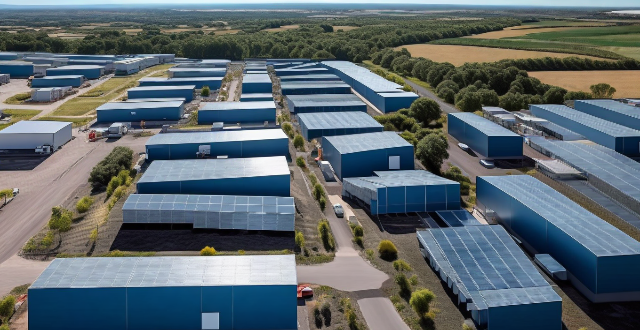
Can you explain the difference between photovoltaic and solar thermal energy ?
Solar energy harnesses the power of the sun to generate electricity or heat. Two major categories are photovoltaic (PV) and solar thermal systems, which differ in their conversion processes, applications, storage capabilities, efficiencies, and costs. PV systems convert sunlight directly into electricity using semiconductor materials like silicon, while solar thermal systems capture the sun's heat to warm a fluid, usually water or air, which then provides heat or generates electricity. PV is mainly used for generating electricity, and solar thermal is used for both heating and electricity generation. Solar thermal systems can more readily incorporate thermal storage solutions, while PV systems typically require battery storage for off-grid applications. The cost and affordability depend on the specific application and location, with PV becoming increasingly competitive in recent years.
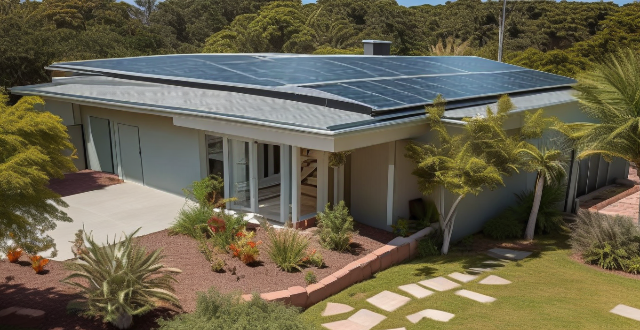
How much does it cost to install a solar panel system ?
The cost of installing a solar panel system varies depending on the size, type of panels used, and installation location. Small residential systems typically range from $15,000 to $25,000 before tax credits or incentives, while medium to large residential systems can cost between $25,000 to $40,000. Commercial systems can vary greatly in size and cost. Monocrystalline silicon panels are the most efficient and expensive option, while thin-film solar panels are the least expensive but also less efficient. Rooftop installations are generally more expensive than ground-mounted installations. Additional costs include inverters, batteries, and installation fees. It is important to consult with a reputable solar installer for an accurate estimate based on specific needs and circumstances.

How do climate models account for factors such as ocean currents, atmospheric pressure, and solar radiation ?
Climate models are complex mathematical representations of the Earth's climate system, designed to simulate and understand the behavior of various components such as ocean currents, atmospheric pressure, and solar radiation. These factors play a crucial role in shaping our planet's climate, and their interactions are essential for accurate climate predictions. Ocean currents act as conveyor belts for heat, moving it from the equator towards the poles and helping to regulate global temperatures. Climate models use fluid dynamics equations to simulate the movement of water in the oceans, and observations from satellites and buoys are integrated into models to improve the accuracy of ocean current simulations. Atmospheric pressure influences weather patterns and is a key driver of wind systems around the globe. Numerical Weather Prediction (NWP) Models solve the Navier-Stokes equations to simulate atmospheric pressure changes over time, while Global Climate Models (GCMs) incorporate principles of thermodynamics and fluid dynamics to predict how pressure variations will impact climate. Solar radiation provides the primary energy source that drives Earth's climate system. Radiative Transfer Models (RTMs) calculate how solar radiation interacts with the atmosphere and Earth's surface, while Spectral Irradiance Models estimate the amount of solar energy reaching Earth based on sunspot activity and other solar cycles. Coupled Models combine RTMs with atmospheric and oceanic models to understand the full impact of solar radiation on climate.

What is the significance of setting short-term versus long-term climate targets ?
The article emphasizes the importance of setting both short-term and long-term climate targets to effectively address climate change. Short-term targets focus on immediate actions, creating urgency, measurable progress, immediate benefits, and building momentum for more ambitious goals. Long-term targets ensure sustainability, deep decarbonization, adaptation, and global cooperation. Achieving these goals is crucial for mitigating the worst effects of climate change and creating a more resilient future.

Is there a difference between short-term and long-term memory in scientific terms ?
Short-term memory and long-term memory are two different types of memory with distinct characteristics. Short-term memory has a limited capacity, typically able to hold around seven items for a brief period, while long-term memory has a large capacity, virtually unlimited, and can store vast amounts of information for an extended period. Short-term memory lasts only for a few seconds unless it is repeatedly rehearsed or transferred to long-term memory, while long-term memory can last for minutes, hours, days, years, or even a lifetime. Short-term memory acts as a temporary holding place for new information, processing it before transferring it to long-term memory, while long-term memory stores information for future use, including facts, experiences, skills, and knowledge. Short-term memory has a faster retrieval speed since the information is readily available in the mind, while long-term memory has a slower retrieval speed as it requires more effort to recall the information from the vast storage. Short-term memory is more susceptible to interference and forgetting due to its transient nature, while long-term memory is more stable and less prone to interference, making it easier to retain information over time. Short-term memory requires rehearsal or encoding processes to transfer information to long-term memory, while long-term memory involves consolidation processes that strengthen neural connections and make the memory more durable.

What is the importance of long-term climate data analysis ?
Long-term climate data analysis is crucial for understanding the Earth's climate system and its changes over time. It provides valuable insights into past climate patterns and trends, which are critical for predicting future climate conditions and developing effective adaptation strategies. By continuing to collect and analyze long-term climate data, we can better prepare ourselves for the challenges posed by a changing climate and work towards a sustainable future.

Can solar flares cause communication interference ?
Solar flares, intense bursts of radiation from the sun's atmosphere, can disrupt communication systems on Earth. This includes shortwave radio signals, satellite communications, and other terrestrial networks. The effects range from signal quality disruption and frequency deviation to satellite link disruptions, GPS accuracy issues, and even physical damage to satellite hardware. While these impacts vary, organizations involved in critical communication operations must be aware of the risks and implement mitigation strategies to minimize potential disruptions.

What are some long-term saving strategies ?
Saving for the long term requires a disciplined approach and a solid plan. Here are some strategies to help you save effectively over the years: 1. Set clear financial goals: short-term, medium-term, and long-term. 2. Create a budget and stick to it by tracking expenses, cutting unnecessary costs, and automating savings. 3. Build an emergency fund that is easily accessible and covers at least 3-6 months' worth of living expenses. 4. Take advantage of employer matches and maximize contributions to retirement accounts like 401(k)s and IRAs. 5. Invest wisely with diversification, risk management, and a long-term perspective. 6. Manage debt by paying off high-interest debts first and considering refinancing options. 7. Regularly review and adjust your financial plan, adapting to life changes as needed. 8. Plan for taxes by choosing tax-efficient investments and being strategic about withdrawals and contributions. 9. Consider estate planning with wills, trusts, and life insurance to protect your family's financial wellbeing. 10. Continuously learn and seek advice from financial professionals when needed. By consistently implementing these strategies, you can build a strong financial foundation for your future.

How do I invest my money wisely for long-term growth ?
Investing wisely for long-term growth involves setting financial goals, creating a diversified portfolio, considering risk tolerance, investing for the long-term, and monitoring investments regularly.
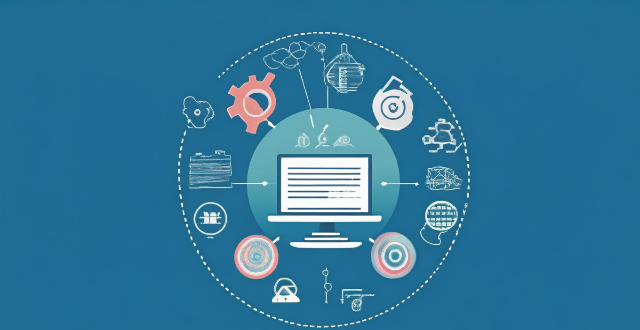
What is the importance of long-term monitoring and evaluation in climate policy ?
The importance of long-term monitoring and evaluation in climate policy is discussed. Long-term monitoring and evaluation help ensure accountability for climate action, identify gaps and opportunities for improvement, inform future policies, build public trust, and promote sustainable development.

What are the best financial products for long-term investment ?
The text provides a comprehensive overview of the various financial products available for long-term investment. It explains the definition, benefits, and risks of each option including stocks, bonds, mutual funds, ETFs, and REITs. The text emphasizes the importance of considering one's investment goals, risk tolerance, and financial situation before choosing which products to include in a portfolio. Overall, the text serves as a useful guide for individuals looking to make informed decisions about their long-term investments.

What is the difference between term life insurance and whole life insurance ?
Difference between term life insurance and whole life insurance: - Term life insurance is temporary coverage, no cash value, renewable, and affordable. - Whole life insurance is permanent coverage, accumulates cash value, has level premiums, and is more expensive.

How can women protect their assets and ensure long-term financial security ?
The article provides a list of strategies that women can employ to ensure their financial security over the long term. These include building an emergency fund, investing in retirement accounts, purchasing life insurance, creating a will, considering long-term care insurance, educating oneself about finance, working with a financial advisor, and prioritizing career development. Each of these steps is crucial in its own way for safeguarding one's assets and ensuring financial stability.

What are some proven strategies for long-term wealth accumulation ?
Long-term wealth accumulation is a goal for many individuals, and there are several proven strategies that can help achieve this objective. Here are some of the most effective approaches: 1\. Start Early: The earlier you start saving and investing, the more time your money has to grow through compound interest. 2\. Live Below Your Means: Spend less than you earn and save the difference. 3\. Invest Wisely: Choose investments that align with your goals, risk tolerance, and time horizon. Diversify your portfolio to spread risk and maximize returns. 4\. Pay Off High-Interest Debt: High-interest debt like credit card balances can be a significant obstacle to wealth accumulation. Paying off these debts should be a priority. 5\. Increase Your Income: Increasing your income can provide more resources for saving and investing, which can help accelerate wealth accumulation. 6\. Plan for Retirement: Retirement planning is an essential component of long-term wealth accumulation, ensuring you have enough funds to support yourself during your golden years. 7\. Protect Your Wealth: Ensure that your hard-earned wealth is protected against unexpected events like lawsuits, accidents, or health issues.

How do climate model predictions differ from weather forecasts ?
Climate model predictions and weather forecasts differ in terms of time frame, purpose, methodology, accuracy, and impact on decision making, with the former focusing on long-term trends for policy-making and the latter offering short-term insights for daily activities.